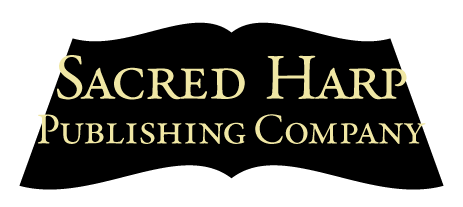Ready for a sneak peek at the new page design for The Sacred Harp: 2025 Edition? Here is a selection of pages including plain and fuging tunes, a two-song page, and a couple of extra-challenging typesetting examples, including 377, “Eternal Praise,” and 419, “Melancholy Day.”

Creating a balanced two-song page requires careful spacing of titles, scriptures, attributions, music, and verses, as demonstrated in this page featuring “Ninety-Third Psalm” (31t) and “Webster” (31b).
Our team of designers created a legible, balanced, and inviting page layout that is steeped in history yet still feels contemporary. We wanted every page to be both visually appealing and easy to read, so we went to great lengths to carefully position every element on every page for maximum legibility and visual harmony.
We chose text typefaces with a similar focus on tradition and readability. The font used for the song titles, text meters, and page numbers is “Optima,” a mid-twentieth century typeface inspired by Renaissance inscriptions. Similar fonts were chosen for covers of some printings of the 1936 and 1960 editions of The Sacred Harp for their classical elegance. For the song texts, scriptures, and attributions, we chose a typeface called “Miller,” inspired by the Scotch Roman style that originated in Scotland around 1800 and quickly became popular in American newspapers and magazines because it is easily legible even at small font sizes. If it looks like a natural fit for our tunebook, that might be because it’s the same style that was used in nineteenth-century editions of The Sacred Harp, beginning with the first edition in 1844.

We wanted our page design to look good not just for tightly-packed songs, but on pages with plenty of space. “Complainer” (141) shows how the design “breathes” on a page with ample space yet remains visually consistent with denser pages like 377 below.

Our music engravers took tremendous care with each aspect of the engraving of songs. “Marlborough” (228) illustrates the handsome look of slurs and ties in the new edition. The design of these glyphs is inspired by nineteenth-century editions of The Sacred Harp but has the flexibility to handle a wide range of angles and widths.
Using our new music and text typefaces in our carefully calibrated page layout, we were able to fit “Melancholy Day” and several other formerly one-and-a-half-page tunes onto a single page. We hope you won’t miss the page turn! We want to thank our design team for giving us a beautiful new look that makes our book even easier to read while keeping in harmony with Sacred Harp tradition.




I really am in awe of the tremendous care, eye for design, and attention to detail of the layout team. I cannot contain my excitement for singing from this book this September, and in the years to come!